The thrill (and challenge) of growing your own vegetables – from pots on a balcony to rural holdings – can be given another dimension by growing organic. National Organic Week (12-18 September) is an opportunity to celebrate all things organic. Library collections include a wide range of material covering the history of organic production, guides to maximising your own horticultural efforts from small to large scale, and the political aspects of food production across the globe.
What does organic mean?
Organic can be defined as a system of agricultural production that relies on ecological processes to reduce or eliminate the need for synthetic chemicals, fertilisers, weed or pest control.1 Over time, it has combined with social, environmental and conservation movements to encourage sustainable and ethical production, more mindful consumption and the championing of local food production.

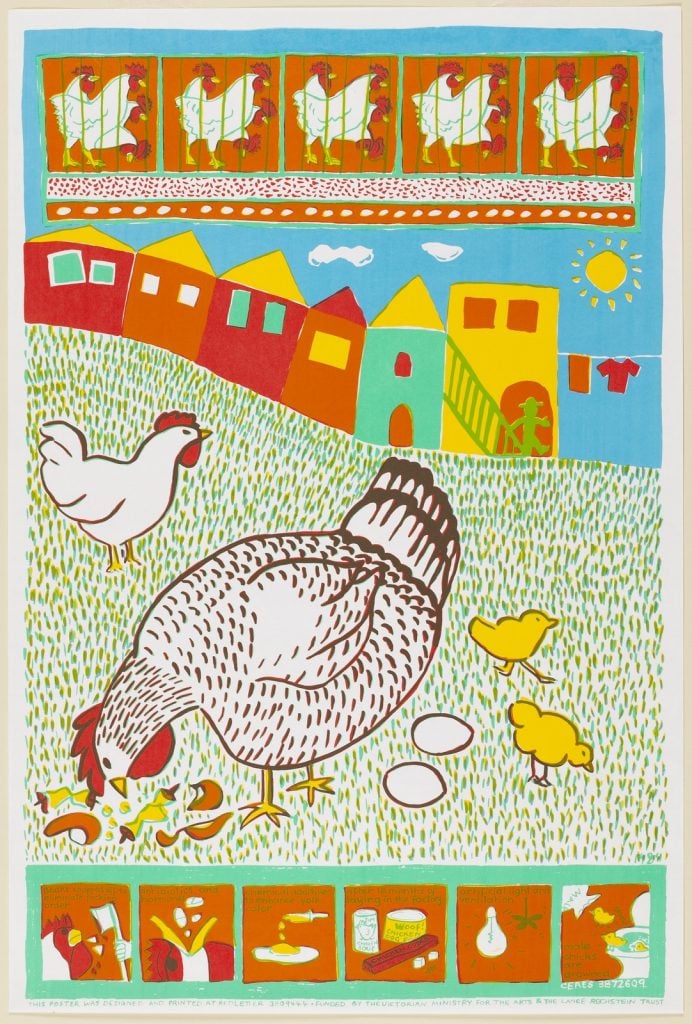
Biodynamic systems were developed by Rudolph Steiner along organic lines and further guided by knowledge of the cosmos and spiritual world. His 1924 lecture series The Agriculture course framed new agricultural practices around “practical points of view for agriculture, which should add to the results of modern practical and scientific experience the results of a study along spiritual scientific lines”.2 Soil nourishment – central to biodynamics is enabled through a circular system incorporating plants and animals – “A farm is only healthy if it can supply itself from the manure yielded by its own animals”.3
A leader of the biodynamic movement in Australia, Ernesto Genoni emigrated in 1926, after having joined Steiner, in his Experimental Circle of Anthroposophical Farmers and Gardeners (ECAFG). In 1935 Genoni with his wife Ileen Macpherson, began the Demeter Biological Farm in Dandenong, Victoria.
Interest was growing in the these practices and the Organic farming digest was produced by the worlds’ first named organic farm society – the Australian Organic Farming and Gardening Society. Established in Sydney in late 1944, the Society promoted conserving the soil and “promotion of health in plants, animals and mankind.” 4
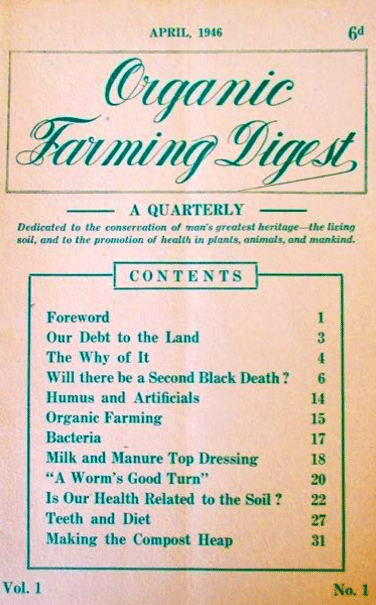
The belief that soil was a living organism and that healthy soil meant healthy productive plants informed Harold White and Stanton Hicks’ 1953 publication Life from the soil. White, a farmer in NSW, and Hicks professor of Human Physiology and Pharmacology at Adelaide University, saw Australia’s farming tradition as a tradition of exploitation “…which has left devastation in its wake….it is not farming…it is a form of mining and like the gold rush it leaves behind a scarred and deserted land.”5 Their work sought to address this devastation through the use or organic matter in soils “decomposing organic matter is fundamental to soil usage.”6

In the 1970’s Bill Mollison and David Holmgren, based in Tasmania, developed their concept of permaculture, publishing Permaculture 1 : a perennial agricultural system for human settlements in 1978. A combination of the words permanent and agriculture – ecological principles, planning and knowledge of plants and their compatibilities combine to design systems to become self perpetuating, and so maximise the health of the plants and reduce or eliminate the need for additional inputs. Permaculture has evolved to be as defined by Holmgren as “consciously designed landscapes which mimic the patterns and relationships found in nature, while yielding an abundance of food, fibre and energy for provision of local needs.”7
Today compost bins and worm farms (or separate FOGO – food and organic waste collections) are provided by many local councils – addressing the issue of massive amounts of these materials ending up in municipal waste collections, and looking to divert this valuable resource to compost production. Looking for images in our collection relating to compost – I discovered a cache of Edna Walling garden designs, including compost yards to absorb the prunings and trimmings from her clients gardens. Too good to throw out!
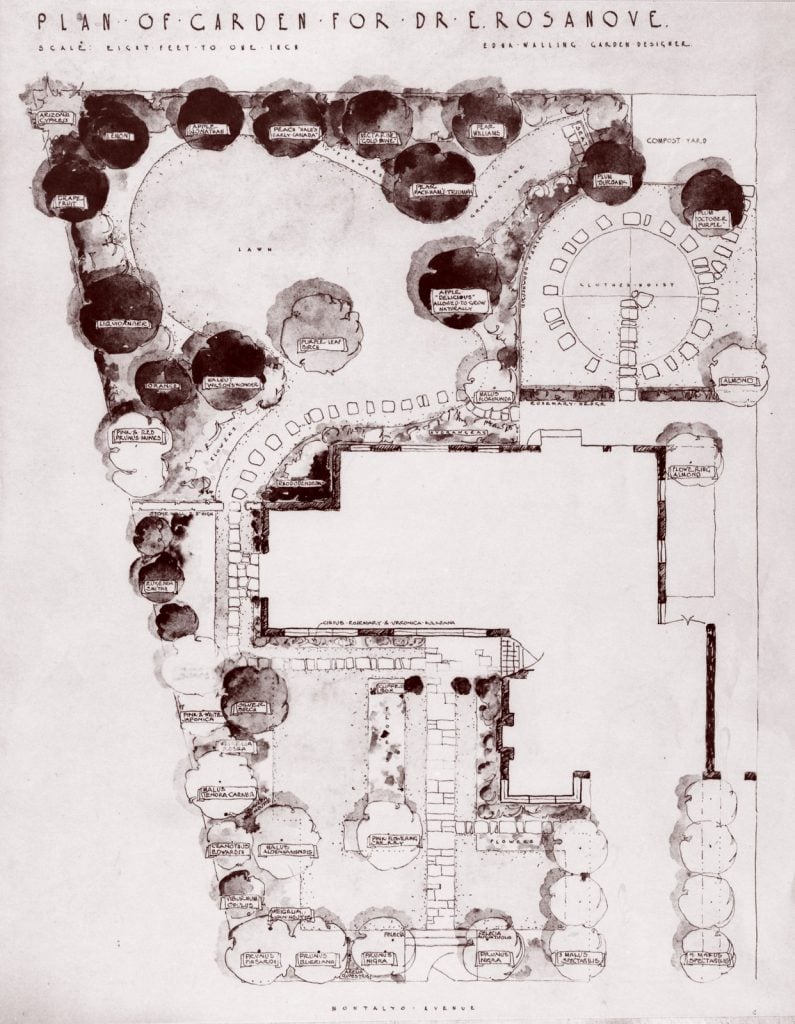
As production increased and interest in organic food grew, stalls at fresh food markets and farmers markets – while not necessarily organic, promoted less industrialised production methods – and evolved to provide alternatives for concerned shoppers. Organic produce is now available in mainstream supermarkets.
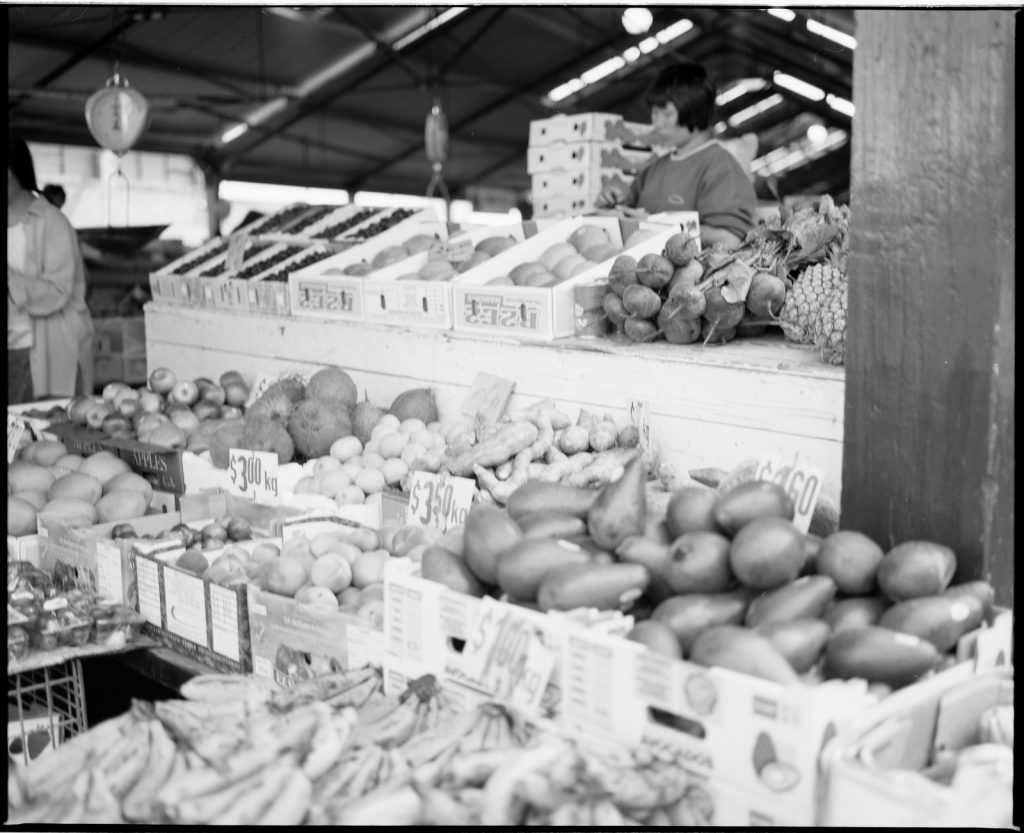
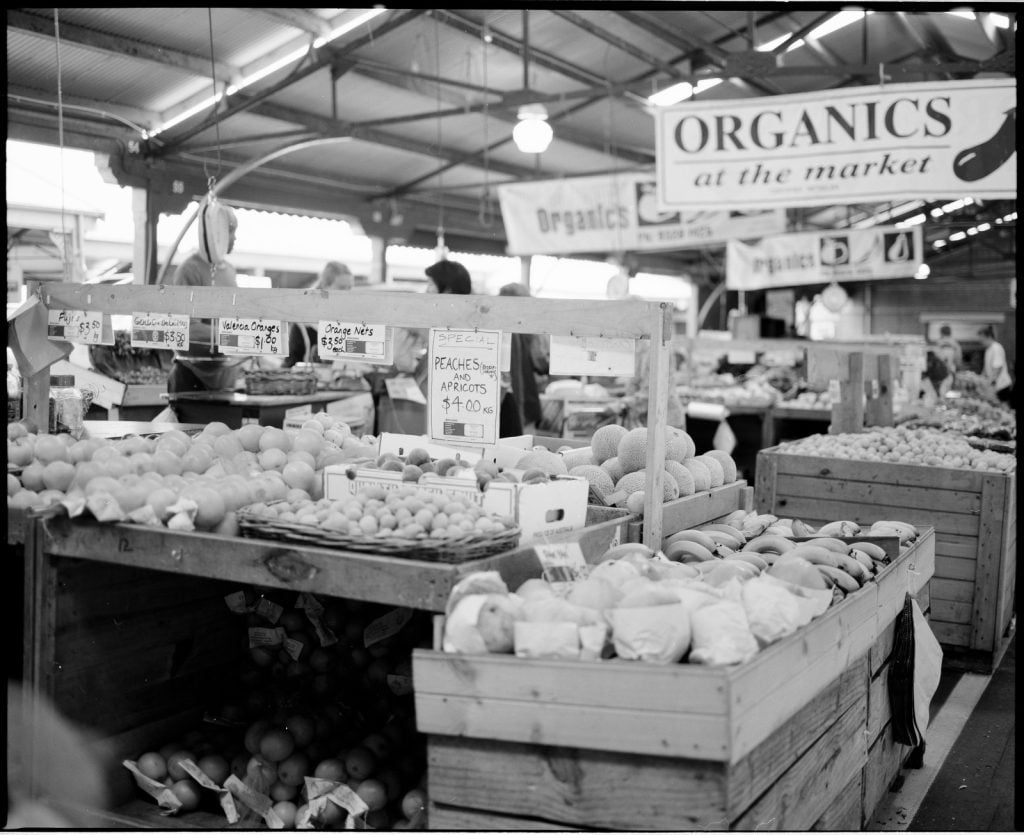
Food cooperatives – as well as providing organically produced products, often provide bulk buying options to reduce packaging.
Both these types of outlets, by establishing direct relationships with growers are able to support them to market their produce and create successful and sustainable enterprises.
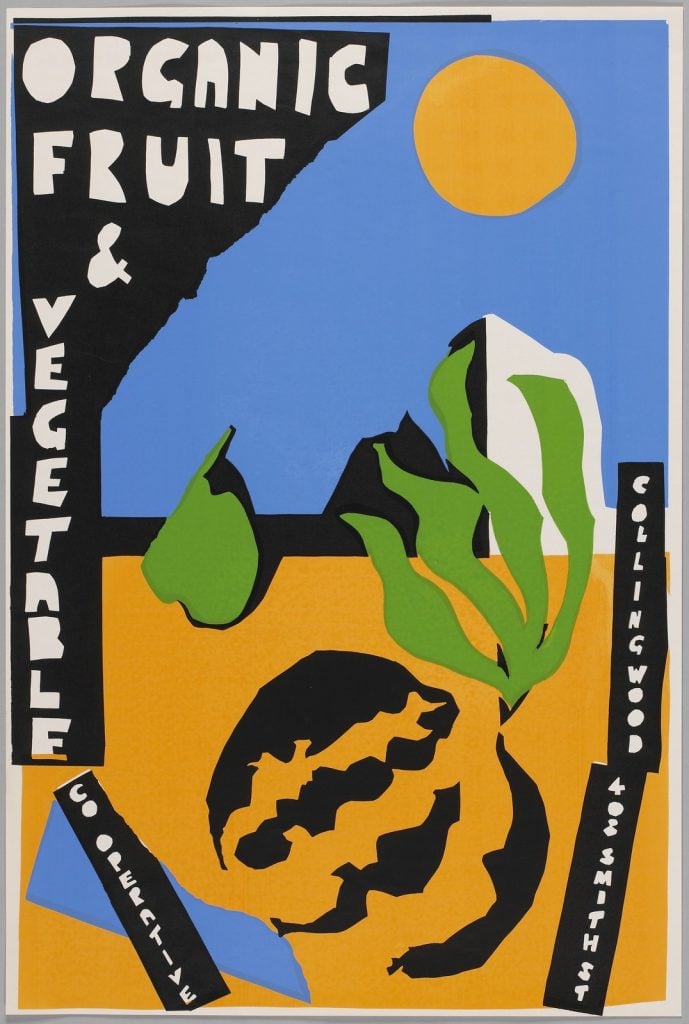
More to explore
National Organic Week
Paull, J, A history of the organic agriculture movement in Australia,
Whitney, C, Permaculture and biodynamics: sustainable systems of living and growing
Organic Research Institute – University of New England research centre
Australian organic – peak body for organic agricultural production
Environmental studies and policy – database available from home for Victorian registered users.
How to find journal articles
Books in Library collections:
Organic farming
Organic gardening
Biodynamics
- Barton, GA, 2018, The global history of organic farming, Oxford University Press, Oxford, p 1
- “Preface“, Steiner, R, 1924, The Agriculture Course
- Steiner, R, The Agriculture Course, Lecture II, Koberwitz, Poland, 10 June 1924
- Paull, J, 2008, ‘The lost history of organic farming in Australia‘, Journal of organic systems, Vol.3, No.2, p 2-17
- White, HF & Hicks, CS, 1953, Life from the soil, Longmans, Green, London, New York, p 20
- as Above, p 70
- Holmgren, D, 2017, Permaculture: principles & pathways beyond sustainability, Melliodora Publishing, Hepburn, Victoria, p xix

